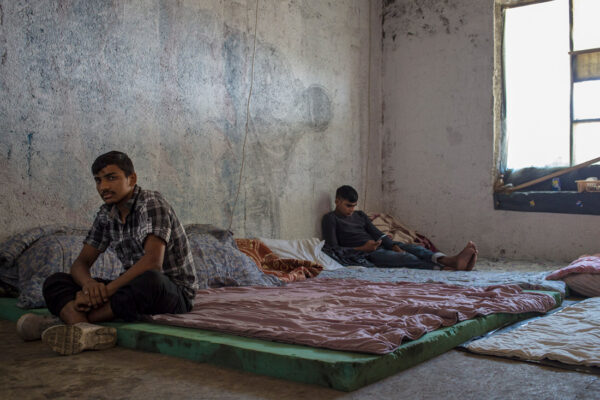Bihać, Bosnia Herzegovina /2018
Text by Davide Lemmi
A thirteen-day walk following the tracks of migrants: 180 kilometres south the wind has disappeared, the language spoken is Serbian-Croatian, the nation is Bosnia. Bihac and Velika Kladusa, facing the south-eastern Croatian border, two cities where migrants stop to rest. Thick forests surround the suburbs and the border is a few hours away. The rigid Balkan winter is coming. Migrant parties leave for the woods every day. A little more than 13,000 people have chosen to pass through Bosnia on route towards the West this year. The numbers are official, provided by the International Organisation for Migration (IOM), but trafficking causes a quiet chaos with regards to the figures. “We think the numbers are 15 per cent higher than those registered”: Peter van der Auweraert, IOM coordinator for the Western Balkans, confirms the difficulty in understanding the actual magnitude of the phenomenon. The simplest border to cross out of the three is the one between Bosnia and Croatia, lined by hundreds of kilometres of forest. It’s the former frontline of the Bosnian war. There’s a latent contradiction in locals’ statements. One the one hand, the memory of having to escape and being considered “migrants” themselves remains just below the surface. If anger caused by isolated destructive behaviours endangers coexistence the memories are what keeps everything together, avoiding conflict. If 2018 was year zero for the “new” route through Bosnia, possible geopolitical changes in the near future – not only in Syria – would give way to an unstoppable phenomenon. When faced with the facts, even with the deterrent of violent expulsions, which have yet to be officially confirmed, the border is still full of holes. Bosnia’s stability will be on the line in 2019, a country that stands on uncertain legs but more generally speaking, the European Union and its ability to keep borders safe will be under scrutiny, a predominant political issue in the three countries affected by the new route: Croatia, Slovenia and Italy.



























